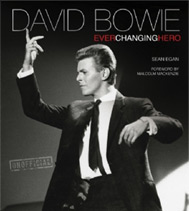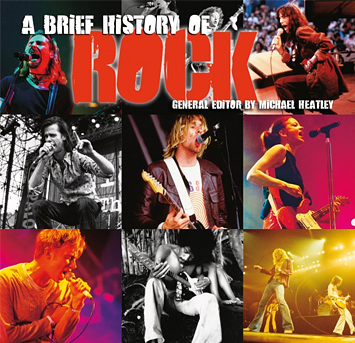1923–2006, Romanian An Eastern European exile whose family was executed by the Nazis during the Second World War, Ligeti was a composer with a neo-Dadaist penchant for the absurd, and a musical style that varied wildly from one piece to another as each work became a world unto itself. While in Germany, Ligeti acquainted himself with the ...
Composed: 1972–76 Premiered: 1978, Stockholm Libretto by the composer and Michael Meschke after Michel de Ghelderode’s play La ballade du Grand Macabre Act I Piet the Pot, drunk as ever, watches Amando and Amanda making love. Nekrotzar, the Grand Macabre, rises from his tomb and prophesies doom for Breughelland at midnight. He rides off on Piet ...
(Jörd’ji Le-get’-e) 1923–2006 Hungarian composer Because of the disruption of World War II and the subsequent Communist regime in Hungary, Ligeti did not become aware of Western European musical modernism until he was over 30. Until then he wrote in the folk-song-based, Bartók-influenced style that was officially approved in his country. He left Hungary during the 1956 uprising, ...
Camille Saint-Saëns (1835–1921) is said to have written the first film score with L’assassinat du duc de Guise (‘The Assassination of the Duke of Guise’, c. 1908). Many composers in the US and Europe followed suit, although few wished to make a career in films. A famous exception was Erich Wolfgang Korngold (1897–1957), whose scores include the Academy Award-winning The ...
Composers of the twentieth century and up to the present have often been drawn to the music of the medieval and Renaissance periods. A relatively early example is Igor Stravinsky (1882–1971), who became interested in the fourteenth-century technique of hocket and in the harmonic experiments of the Italian composer Carlo Gesualdo (c. 1561–1613). Hocket has since inspired many composers, both ...
In one form or another, the harpsichord ruled the domestic keyboard roost throughout Europe – and later in America – from the late-sixteenth to the early-nineteenth centuries. Apart from the organ, it was the grandest and most versatile of all keyboard instruments until the advent of the mature fortepiano in the mid- to late-eighteenth century. Rise and Fall of ...
The term ‘horn’ is generally used to refer to the orchestral horn, also known as the French horn. Although it is used in jazz slang to indicate any wind instrument played by a soloist, the name here refers to the orchestral horn. History The early history of the horn is bound intimately to that of the trumpet. Both instruments ...
Sound effects and instruments trouvés include found objects and specialist machines for making noises. Composers have made extensive use of both sound effects and found objects in orchestral music, especially in music for theatre, dance and opera. Sound Effects The wind machine was originally a theatrical sound effect, and is a cylinder of wooden slats with a canvas ...
Of the woodwind instruments, the oboe has experienced perhaps the most organic development. There is no single, revolutionary moment at which the oboe became a modern instrument, and it retains strong links with the past both in sound and design. Shawm The modern oboe is a direct descendant of the shawm and the hautboy. The shawm was a ...
Varèse was particularly interested in the sounds of the modern urban world. His music takes a sound world derived from factories and industrialization and turns them into music. But it took the off-beat genius of Ligeti to compose a work entirely for special effects: his Poème symphonique (1962) has passed into musical folklore as the piece of music written for 100 ...
The story of classical music is not bound up simply with the traditions of any one country: it is tied up with the cultural development of Europe as a whole. This section attempts to pick out the composers from each successive age who, looked at from one point of view, exerted the greatest influence on their contemporaries and subsequent ...
After the devastation wrought in Europe by World War II, the urgent task of rebuilding the continent’s war-torn urban fabric demanded radical solutions. These were found in the centralized urban planning advocated before the war by architects such as Le Corbusier and Ludwig Mies van der Rohe. Writing in 1953, the composer Karlheinz Stockhausen (1928–2007) created an explicit analogy ...
The opera house and, more specifically, opera audiences, were among the last to be receptive to the new musical language that developed during the twentieth century. Slow, as well as reluctant to vary their traditional musical tastes, perceptions and expectations, many viewed the opera house with nostalgia; as a symbol of the establishment, holding ...
b. 1935 German composer Lachenmann studied in his home city of Stuttgart and then with Nono in Venice, soon himself becoming an influential teacher in Europe. While his early works employ serialism, he later developed his own approach, which he called musique concrète instrumentale – using conventional instruments to mimic the effect of electronically produced or manipulated sound. ...
1888–1976, American One of modern opera’s great singers, Lehmann’s performances of Robert Schumann’s songs were renowned. She created the roles of the composer in Ariadne auf Naxos, the Dyer’s Wife in Die Frau ohne Schatten and Christine in Intermezzo, all by Strauss. Although her true artistic home was Vienna, she made an auspicious debut as Sieglinde ...
AUTHORITATIVE
An extensive music information resource, bringing together the talents and expertise of a wide range of editors and musicologists, including Stanley Sadie, Charles Wilson, Paul Du Noyer, Tony Byworth, Bob Allen, Howard Mandel, Cliff Douse, William Schafer, John Wilson...
CURATED
Classical, Rock, Blues, Jazz, Country and more. Flame Tree has been making encyclopaedias and guides about music for over 20 years. Now Flame Tree Pro brings together a huge canon of carefully curated information on genres, styles, artists and instruments. It's a perfect tool for study, and entertaining too, a great companion to our music books.

David Bowie
Fantastic new, unofficial biography covers
his life, music, art and movies, with a
sweep of incredible photographs.


